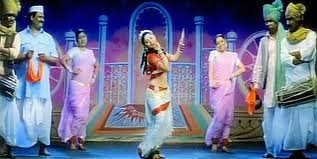WHAT ARE THE SPRING FESTIVAL OF INDIA?

Like a rainbow that glitters in a diversity of colours, the festivals in the month of April celebrated in various corners of our country, draw people from India and abroad, filling them with wonder and delight. The diversity of India enhances this country with a wide variety of cultures and customs with inestimable beauty and richness. They uplift everyone's hearts with pride and grandeur.
Tulip Festival (Kashmir)
No one can imagine the colours that can churn and please your senses with the aesthetic beauty of nature. The Tulip Festival is a unique festival hosted in the Kashmir Valley during spring. It will take place from 3 April to 30 April 2022, and this year, 62 varieties of tulips will be on display. People gather here to enjoy the awe-inspiring beauty of nature. The Dal Lake stands out when the beauty is at its peak.
Baisakhi (Punjab)
Baisakhi is the New Year of the Sikhs. Besides being a spring time harvest festival, the day commemorates the formation of the Khalsa Panth of warriors under Guru Gobind Singh in 1699. Every year it is celebrated on 13 April and after every 36 years, on 14 April. It is a time when farmers of northern India get enthusiastic to harvest the season's crop and energize themselves to sow the next season's crop. It is a festival to celebrate their hard work that is visible in the form of their golden crops.
Bihu (Assam)
Assam is blessed with rich soil for agriculture and surrounded by blue mountains and the mighty Brahmaputra river to maintain its freshness. The festival of Bihu gives a uniqueness to the Assamese people and marks it as an exceptional harvest festival of Assam. It is celebrated thrice during important junctures of the agrarian calendar. The first Bihu which is known as the Bohag Bihu or Rongali Bihu is celebrated for a period of seven days in the month of April. On this occasion, the farmers prepare their fields for cultivation, and the occasion is filled with feasting and dance.
Shad Suk Mynsiem (Meghalaya)
Meghalaya with the celebrates the onset of spring with the community's biggest festival, Shad Sukh Mynsiem, through which they offer their gratitude to the creator for all the blessings and bountiful harvests received. This festival offers them a stage to showcase their traditional dance and rituals which gives them a unique identity in the country. Visitors to the Shad Suk Mynsiem festival can also learn about how they keep alive old traditions and help indigenous beliefs and customs flourish in the modern century. This festival marks one of the best ways to see the beautiful and ancient heritage, beliefs and motifs of the community.
Aoling Festival (Nagaland)
This festival is celebrated by the famous Konyak tribe of Nagaland during which they seek blessings from the creator for their upcoming harvest. The colourful dresses, traditional dances, meat preparations, feasting and gathering are the main components of the festival.
Chithirai Festival (Tamil Nadu)
According to the Tamil calendar, Chithurai is the first month of the year and the starting of the financial year. During this 15-day festival, people from all over the world gather in Madurai temples with great enthusiasm and joy. It is believed that on this day Lord Vishnu comes to attend the marriage ceremony of his sister, goddess Meenakshi, to Lord Sundreshwar. The Chithirai festival involves a series of events that are not only pleasing to the eye but also represents traditions of southern India.
Kadammanitta Padayani (Kerala)
The annual temple festival of Kerala is held in the month of April, attracting tourists from all over the world with its theatrical processions rather than celebratory rituals. It is a traditional festival that transforms the idea of celebration. It showcases the art of southern India with an eclectic blend of music, dance, theatre, satire, facial masks, paintings, excitement and enjoyment. It is a ten day-long celebration devoted to the goddess Bhadrakali.
Mopin (Arunachal Pradesh)
This agricultural festival of Arunachal Pradesh, is a five-day-long festival ebrated by the Galo tribe. People smear rice powder on each other's faces and express their traditions through Popir, a slow and graceful dance by the women of the tribe all dressed in white. The focus of the festival is to turn back from evil spirits.
Sankat Mochan (Varanasi)
This is the annual classical music festival of Varanasi held at the Sankat Mochan Temple at Varanasi. Eminent classical musicians, singers and performers participate in this most exclusive worldwide cultural event. The reputed festival welcomes audiences from all over the world to experience classical music.
Naba Barsha (West Bengal)
It is marked as the first month in the Bengali calendar and celebrated on the 13th or 14th day of April according to the English calendar. Culturally rich people of Bengal indulge in rituals and traditions, decorating their houses with rangolis. The festival is marked by colourful processions, fairs, festive family get-togethers, and prayers to the Ganesha and the goddess Lakshmi for health and wealth in the year ahead.
Urs Festival (Ajmer)
Khwaja Moinuddin Chishti was a popular Sufi saint whose dargah is in Ajmer. He was the founder of Chisti Sufi and popularly known as Khwaja Gharib Nawaz. The Urs Festival is a six-day long festival during which devotees pay respect at the saint's grave by placing ceremonial chadars over it. Candles are lit, prayers are offered, and qawwalis are sung all night.
Kollam Pooram (Kerala)
Kollam Pooram is held every year in April in Kollam city of Kerala. The festival is widely popular and witnesses crowds from all over the world. A grand procession of elephants appears from different temples, the most famous among them being the Thamarakulam Sri Mahaganapathy Temple and the Puthiyakavu Bhagawathy Temple. Another attraction of the festival is the display of colourful umbrellas atop traditionally-adorned elephants, and the beats of drums known as 'melam'. The pooram ends with fireworks at night.
Picture Credit : Google
